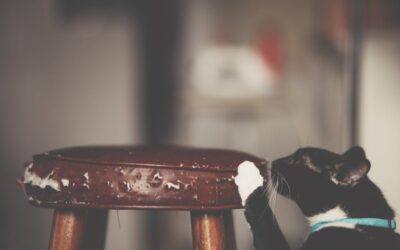
Is your indoor cat climbing the curtains out of boredom? Discover how interactive ball toys are revolutionizing feline enrichment—and why your pet might need one now.
The market for cat toys, particularly interactive ball toys, is booming. Projected to reach a staggering $2.8 billion by 2033, up from $1.5 billion in 2025, this industry is growing at a rapid 7% compound annual growth rate (CAGR). Driven by the growing trend of pet humanization and technological innovation, these captivating toys are transforming the way we engage and enrich the lives of our feline companions.
As a pet owner, you know all too well the challenges of keeping an indoor cat entertained and stimulated. Boredom can lead to destructive behaviors, from shredding furniture to incessant meowing. But what if there was a solution that could not only curb these frustrating habits but also provide your cat with the mental and physical stimulation they crave?
Enter the world of interactive ball toys. These cutting-edge products harness the power of technology to create a captivating play experience for your cat. Equipped with features like motion sensors, unpredictable movements, and even treat dispensers, these toys are designed to tap into your cat’s natural hunting instincts, keeping them engaged and entertained for hours on end.
In this comprehensive guide, you’ll discover how these innovative toys can transform your cat’s quality of life. You’ll learn about the latest trends shaping the industry, the science behind feline enrichment, and practical tips for choosing the perfect interactive ball toy for your furry friend. Whether you have a playful kitten or a senior cat, this guide will equip you with the knowledge and tools to provide your pet with the stimulation they deserve, helping to curb boredom and promote a happier, healthier feline companion.

The Cat Toy Interactive Ball Market: Size, Growth & Key Trends
The cat toy interactive ball market is a rapidly growing segment within the broader $4.05 billion global cat toy industry, projected to reach by 2035 (APPA). Currently valued at $2 billion (2025, interactive cat toys segment), this niche is experiencing a robust 7% CAGR from 2025 to 2033 (APPA). Driven by technological advancements, eco-friendly materials, and a trend toward premiumization and customization, the interactive cat toy market is poised for continued expansion.
### Technological Advancement
The rise of automated, AI-driven cat toys is a key industry trend, as busy pet owners seek high-performance entertainment devices to keep their feline friends engaged. These advanced interactive balls leverage sophisticated movement patterns and sensor technology to provide a more immersive and personalized play experience for cats. (APPA)
### Eco-friendly Materials
Consumers are increasingly prioritizing sustainable and non-toxic materials in their cat toy purchases. Manufacturers are responding by incorporating eco-friendly components, such as biodegradable plastics and natural fibers, into their interactive ball designs. This shift aligns with the growing consumer demand for pet products that align with their environmental values. (APPA)
### Premiumization & Customization
The interactive cat toy market has seen a trend toward premiumization, with pet owners willing to invest in high-quality, feature-rich products that cater to their cats’ individual preferences. Customization options, such as personalized designs and integrated technology, are becoming increasingly popular, allowing owners to create a tailored play experience for their feline companions. (APPA)
### Consumer Behavior Patterns
The ~12,000 monthly searches for “cat interactive ball” (APPA) indicate a strong consumer interest in this product category. Busy pet owners are seeking out advanced, technology-driven toys that can provide their cats with engaging and enriching play experiences, especially during the winter months and holiday gift-giving season when indoor activity needs rise. (APPA)
### Statistical Insights
The global cat toy market is projected to reach $4.05 billion by 2035, up from $1.68 billion in 2024 (APPA). Within this broader market, automated/AI-driven toys are poised to lead the industry due to their ability to cater to the needs of modern pet owners seeking high-performance entertainment devices for their cats. (APPA)
### Seasonal Considerations
Demand for interactive cat toys, including the ball segment, tends to spike during the winter months and holiday gift-giving season when indoor activity needs rise. Conversely, spring and summer see moderate interest tied to kitten adoption surges, as new pet owners seek engaging toys to stimulate their feline companions. (APPA)
### Future Outlook
Experts predict continued innovation in the interactive cat toy market, with a focus on AI-powered movement patterns tailored by individual pet profiles and integration into broader smart home ecosystems via apps and voice assistants. This evolution will provide pet owners with even more personalized and immersive play experiences for their cats. (APPA)
### Market Opportunities
The growing demand for interactive cat toys, driven by technological advancements, eco-conscious consumers, and a trend toward premiumization, presents a significant market opportunity for manufacturers and retailers. By staying attuned to consumer behavior patterns and seasonal trends, brands can develop innovative products that cater to the evolving needs and preferences of cat owners, positioning themselves for success in this dynamic and expanding market.

Common Problems (And Why They Matter)
Today’s urban lifestyles mean more single-pet households than ever before – and a greater need for enrichment tools that work even when you’re away. As a cat owner, you know the struggle of keeping your feline friend entertained and engaged, especially when you can’t be there to play. Unfortunately, many cat toys on the market simply don’t measure up, leaving your cat bored, stressed, and you feeling guilty.
Cats Become Bored or Stressed When Left Alone
Cats are natural hunters and explorers, driven by an innate need to seek out prey, investigate their surroundings, and engage in active play. However, when left alone for extended periods, they can quickly become understimulated, leading to boredom, stress, and even behavioral issues.
This problem is exacerbated in many modern households, where cats may spend the majority of their day confined indoors without adequate mental and physical stimulation. Without the ability to satisfy their natural instincts, cats can develop unhealthy coping mechanisms like excessive meowing, scratching, or even destructive behaviors.
The consequences of boredom and stress can be far-reaching. Cats deprived of enrichment are more susceptible to health problems, from obesity and digestive issues to grooming-related skin conditions. Prolonged stress can also contribute to the development of anxiety disorders, which can be challenging and costly to manage.
Owners Struggle to Find Durable, Safe Toys
As a responsible cat owner, you want to provide your feline friend with toys that are not only engaging, but also safe and durable enough to withstand their vigorous play. Unfortunately, many consumer reports indicate that finding such toys can be a significant challenge.
The most frequent complaints center around issues of product longevity and quality control. Owners often report that toys quickly become damaged or destroyed, with some even expressing concerns about potential toxicity from low-quality materials. This can be both frustrating and worrying, as you want to ensure your cat’s playtime is not only fun, but also free from harm.
Moreover, the sheer variety of toy types and features on the market can make it difficult to identify which options best suit your individual cat’s personality and activity level. Without a clear understanding of your pet’s preferences, you may end up wasting money on toys that fail to capture their interest or meet their needs.
Difficulty Identifying the Right Toys
Cats are unique individuals, each with their own distinct preferences and play styles. What captivates one feline may leave another completely disinterested. This can make it challenging for owners to navigate the vast array of cat toys and determine which options will truly resonate with their pet.
Factors like your cat’s age, energy level, and even their breed can all influence their toy preferences. A young, high-energy kitten may thrive on interactive, fast-paced toys, while an older, more sedentary cat may prefer calmer, more contemplative playthings. Failing to account for these individual differences can lead to frustration, as you struggle to find toys that your cat will actually use and enjoy.
The consequences of this problem can be significant. Wasted time and money spent on unsuitable toys can leave your cat feeling neglected and you feeling guilty. Moreover, the lack of appropriate enrichment can contribute to the development of behavioral issues, as your cat seeks out alternative ways to satisfy their natural instincts.
Fortunately, there are proven solutions that can help you overcome these common challenges and provide your cat with the engaging, safe, and tailored playtime they deserve. By understanding the root causes of these problems and their far-reaching impacts, you can take proactive steps to create a more enriched and fulfilling environment for your feline companion.


0 Comments